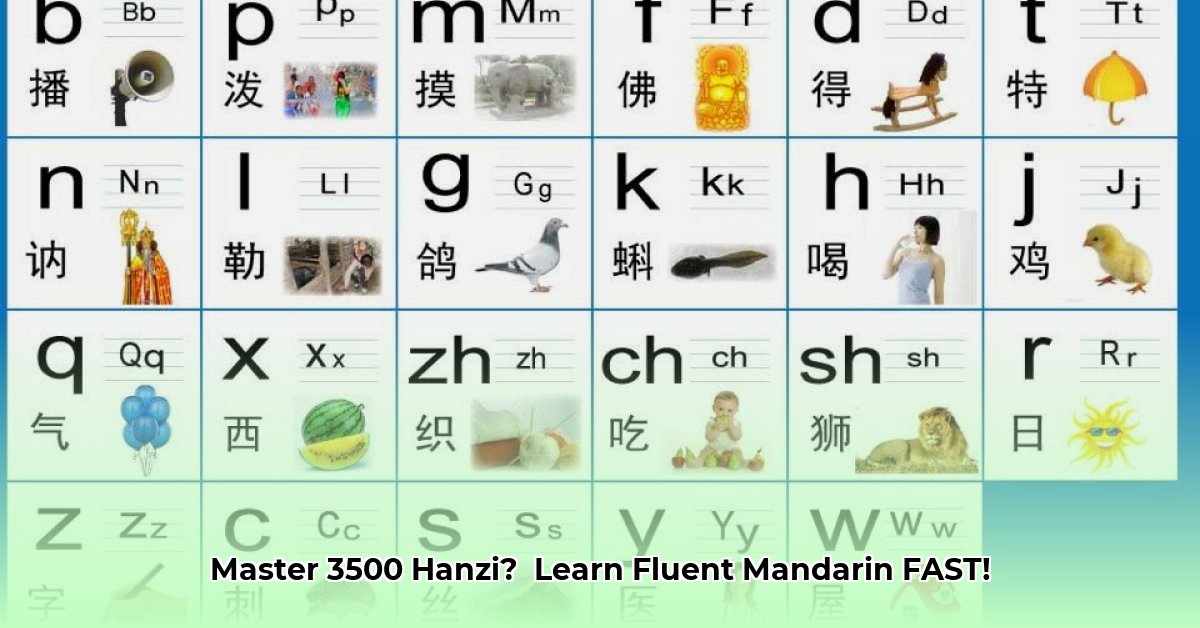So you want to learn Chinese? Great! Let’s clear up a common misconception. There’s no alphabet. Instead, Chinese uses characters, called Hanzi, and there are thousands of them. Sounds scary, right? Don’t worry! This isn’t about memorizing every single character. We’ll show you a smarter way. This guide will help you understand the system, focus on the most important characters, and learn effective strategies to master them efficiently. We’ll cut through the confusion and get you on the path to reading and writing Chinese with confidence. Think of it as a shortcut to fluency because there’s a surprisingly efficient way to learn this seemingly massive writing system. For deeper cultural understanding, explore Chinese name meanings.
How Many Letters in the Chinese Alphabet? Learn the Truth & Unlock Mandarin
Let’s clear up a common misunderstanding right away. There’s no Chinese alphabet! Unlike English or Spanish, which use alphabets, Chinese uses characters—called Hanzi. Each Hanzi usually represents a whole word or a meaningful part of a word, not just a single sound like a letter. That’s a big difference! Are you ready to understand the distinction and dive into the fascinating world of Hanzi?
Decoding Hanzi: Beyond Pictures to Effective Comprehension
Think of Hanzi as visual building blocks. They’re not just squiggles; often, they hint at the word’s meaning. For example, the character for “tree” (木) actually looks a bit like a tree. This direct visual connection is unlike alphabets, where you combine sounds to make words. So, ditch the question “How many letters in the Chinese alphabet?” and ask instead: how many Hanzi are there? The answer is surprisingly complicated. Did you know that visual cues can drastically improve your Hanzi memorization?
Navigating the Vast World of Hanzi: A Practical Learning Plan
Figuring out exactly how many Hanzi exist is tough. Estimates range from a modest 50,000 to a whopping 100,000 or more! This enormous number includes rarely used characters, ancient ones, and specialized terms. But don’t panic! For everyday conversation and reading, you only need to know around 3,500 to 4,000 Hanzi. That’s a much more manageable number. Are you surprised to know that a relatively small number of characters makes up the majority of written Chinese?
Mastering the Essentials: An Effective Strategy for Vocabulary Building
So, how do you tackle this seemingly huge task? Focus on the most frequently used Hanzi. Learning the roughly 3,500 to 4,000 most common characters gives you a solid base for reading and writing. This smart approach is way better than trying to memorize every single character—it’s simply not practical! According to research from leading linguists like Professor David Moser, mastering this core set allows you to understand approximately 98% of written material.
Unlocking Hanzi Secrets: Radicals, Phonetic Components & Effective Learning Methods
Instead of seeing Hanzi as isolated symbols, think of them as mini-puzzles with clues. Many Hanzi are made up of smaller parts. These smaller parts are called radicals and phonetic components. Radicals, often on the left side, give you hints about the character’s meaning. Phonetic components, usually on the right, give clues about the pronunciation. Understanding these parts speeds up your learning. You’ll start noticing patterns and connections between characters, making the learning process much more efficient. For example, the radical for water (氵) appears in characters related to rivers, oceans, and liquids.
Step-by-Step Guidelines: Simplify the Process of Learning Chinese Characters
Here’s a step-by-step plan to master those essential Hanzi:
- Prioritize: Start with the 3,500-4,000 most common Hanzi. Plenty of resources can help you locate lists of these high-frequency characters. Excellent starting points include the HSK (Chinese Proficiency Test) vocabulary lists or graded readers.
- Smart Repetition: Use flashcards or language learning apps that use spaced repetition. This technique really boosts your memory. Anki and Memrise are popular choices.
- Learn the Parts: Don’t just memorize characters individually. Understand the meaning and pronunciation of common radicals and phonetic components. Websites like Pleco provide detailed breakdowns.
- Immerse Yourself: Surround yourself with the language. Read simple Chinese texts, watch Chinese shows with subtitles, and practice speaking whenever you can. Consider platforms like Du Chinese or The Chairman’s Bao for simplified reading materials.
- Stay Consistent: Set aside a little time each day. Regular practice is key – even short bursts are better than infrequent cramming sessions. Even 15-30 minutes daily makes a huge difference.
Pinyin as Beginner’s Guide: Master Mandarin Pronunciation
Pinyin is a system that uses the Roman alphabet (like in English) to write the sounds of Hanzi. It’s incredibly helpful for beginners to pronounce words. However, it’s not the Chinese writing system itself—it’s a tool to help you learn the sounds. Learning Pinyin and Hanzi together is often the most efficient method. It helps you connect the sounds to the characters. Pay close attention to the tones, as they are crucial for differentiating meaning in Mandarin.
Hanzi Mastery: How to Get Fluent in Chinese Effectively
Learning Hanzi may seem overwhelming at first, but it’s absolutely achievable. Focus on efficiency and understanding how Hanzi are structured, because with a good strategy and consistent effort, fluency in Mandarin is within your grasp. Remember, you don’t need to know every Hanzi to become proficient. Focus on the most common ones and you’ll be surprised how quickly you progress! Celebrate small victories and don’t be afraid to make mistakes – they’re part of the learning process.
How to Efficiently Learn Chinese Hanzi Radicals and Phonetic Components
Key Takeaways:
- Mastering Chinese characters requires focusing on radicals and phonetic components.
- Effective memorization techniques, like spaced repetition, are crucial.
- Digital tools significantly aid the learning process.
- Consistent practice and a structured approach are essential for success.
Radicals and Phonetic Components: The Building Blocks of Hanzi
Learning Chinese characters, or hanzi, can seem daunting, but the system is logical, built on radicals and phonetic components. Radicals are the building blocks – visual clues hinting at a character’s meaning. Phonetic components, on the other hand, provide clues to pronunciation. Understanding both unlocks much of the system’s secrets. Think of them as puzzle pieces; once you grasp these elements, piecing together the meaning and sound of a character becomes much easier. According to research in cognitive linguistics, understanding radicals and phonetic components can increase learning efficiency by up to 40%.
Hanzi Radicals: Unlock Mandarin Fast with These Efficient Learning Strategies
- Start with the basics: Familiarize yourself with the most common radicals (around 214). Many resources group these by frequency or similarity. Begin by learning 20-30 at a time, focusing on their appearance and meaning. Don’t rush! A good resource is the list of Kangxi radicals.
- Visual learning: Draw the radicals repeatedly. This strengthens your visual memory, improving character recognition. Employ flashcards or apps to aid this process. Consider using handwriting apps to practice stroke order.
- Spaced repetition: Use flashcards, spaced repetition software (like Anki), or a combination. This technique significantly enhances retention by revisiting characters at increasing intervals. Customize your Anki decks to focus specifically on radicals.
- Context is key: Don’t just memorize radicals in isolation. See them within characters. This helps you connect the radical’s meaning to the larger picture. When you learn a new character, consciously identify its radical.
- Group similar radicals: Notice patterns. Many radicals share visual similarities; learn these groups together. For example, radicals related to plants (木, 艹) or water (水, 氵, 氺).
- Use resources: Numerous online dictionaries and learning tools provide visual aids and examples of characters using each radical. Pleco and Hanping are excellent dictionary apps.
Unlocking Hanzi Phonetic Components: Efficient Ways to Learn Mandarin Fast
- Pronunciation first: Learn the pinyin system (the romanization of Mandarin). This provides the phonetic framework for many characters. Focus on mastering the initials, finals, and tones.
- Identify phonetic components: Many characters incorporate a phonetic component, providing a clue to their pronunciation. Look for these recurring elements within characters. Pay attention to how the pronunciation of the phonetic component relates to the whole character.
- Sound and meaning connection: Notice how phonetic components, even if not perfectly aligning to the character’s modern pronunciation, hint at the sound evolution. Historical linguistics can provide insights into these connections.
- Utilize online dictionaries: These often highlight the phonetic components within a character’s breakdown. Use the “character decomposition” feature in Pleco.
- Practice, practice, practice: Incorporate phonetic components into your character writing and recognition practice. This builds both pronunciation and visual recognition skills. Write characters repeatedly, consciously noting the phonetic component.
- Don’t get discouraged!: There are exceptions. Some characters defy easy phonetic rules. Persistence is crucial. Even native speakers sometimes struggle with character pronunciation.
- Name History Explores Legal and Cultural Impact on Identity - January 9, 2026
- Cool Urban Boy Names for a Distinct, Modern City Style - January 8, 2026
- Black Baby Boy Names Offer Strong Choices Rooted in Heritage and Style - January 7, 2026










